Do you have a question about the Brother MFC-J5335DW and is the answer not in the manual?
Explains the symbols and conventions used throughout the User's Guide.
Lists the trademarks of Microsoft, Apple, Nuance, Yahoo, Google, Mozilla, Bluetooth SIG, and Intel.
Provides crucial information about product usage, country restrictions, software versions, and potential feature availability.
Confirms essential checks before operation, paper selection, and explains simultaneous printing, scanning, and faxing.
Details the components of the machine's control panel, including the touchscreen LCD and menu buttons.
Describes the three home screens and their access to features like Shortcuts, Wi-Fi setup, Settings, and Ink levels.
Explains how new information from Brother appears in the information bar when notification settings are on.
Details the settings menu accessed via the touchscreen, covering Maintenance, Quiet Mode, Fax Preview, Receive Mode, Date & Time, Wi-Fi, Tray Setting, and All Settings.
Explains how to interact with the touchscreen, including touching, swiping, and using navigation buttons.
Guides users on how to change the Ready screen to different options like Screen 1, Screen 2, Screen 3, or Shortcuts.
Provides instructions for changing the default screen for Copy and Scan modes on the machine.
Explains how to access Brother Utilities, an application launcher for Brother applications installed on the computer.
Provides step-by-step instructions for uninstalling Brother software and drivers from a Windows computer.
Provides instructions for loading paper into Paper Tray #1, Paper Tray #2, the Multi-purpose Tray, and the Manual Feed Slot.
Details how to load documents into the Automatic Document Feeder (ADF) and onto the Scanner Glass, including unscannable areas.
Covers various printing tasks from a Windows computer, including printing photos, documents, canceling jobs, N in 1 printing, posters, and duplex printing.
Explains how to perform printing tasks from a Macintosh computer, including photo printing, document printing, duplex printing, and N in 1 printing.
Guides users on how to print photos and PDF files directly from a USB flash drive without using a computer.
Details how to use the Scan button for direct scanning to PC, USB drive, email, FTP server, and network folders.
Explains various methods for scanning from a Windows computer using ControlCenter4, Nuance PaperPort, or Windows applications.
Covers scanning from a Macintosh computer using ControlCenter2 or TWAIN-compliant applications.
Provides instructions on how to configure scan settings remotely via Web Based Management.
Guides users on how to perform basic copying operations, including setting the number of copies and adjusting copy settings.
Explains how to adjust the enlargement or reduction ratio for copied data to resize it for different paper sizes.
Details how to sort multiple copies to stack them in order for easier distribution.
Explains how to copy multiple pages onto one page (N in 1) or enlarge sections to create a poster.
Provides instructions for performing 2-sided copying, covering automatic and manual methods for different document layouts.
Explains how to use the 2in1(ID) feature to copy both sides of an identification card onto one page.
Describes how to use predefined shortcuts for A3 or Ledger size paper copying, including Note style and 2 in 1 copies.
Explains how to use Ink Save Mode to print lighter colours and emphasize image outlines, potentially saving ink.
Details various copy settings such as Quality, Paper Type, Paper Size, Enlarge/Reduce, Density, Stack/Sort, Page Layout, 2-sided Copy, and Advanced Settings.
Covers various methods for sending faxes, including from the machine, ADF, manually, delayed, broadcasting, and PC-FAX.
Explains how to set up receive modes, preview faxes, shrink pages, set stamps, and manage memory receive options.
Covers voice operations, storing fax numbers, and setting up groups for broadcasting.
Discusses connecting external devices like BT Call Sign, Caller ID, and external telephones, as well as PBX connections.
Explains how to set transmission verification report styles, fax journal intervals, and print various reports.
Details PC-FAX functionality for Windows and Macintosh, including sending and receiving faxes via computer.
Provides a table showing network feature support across different operating systems like Windows Vista/7/8/10 and OS X.
Explains how to configure and change network settings using management utilities like BRAdmin Light and BRAdmin Professional.
Covers advanced wireless setup methods including WPS (Push Button and PIN), manual SSID configuration, and Wi-Fi Direct.
Details features like printing network configuration reports, I-Fax usage, LDAP search configuration, and SNTP time synchronization.
Covers resetting network settings to factory defaults and printing WLAN reports.
Recommends disabling insecure protocols like FTP/TFTP and outlines the importance of network security for data protection.
Explains how to restrict functions, set user page limits, and grant access to specific features for enhanced security.
Covers configuring certificates and using Web Based Management for secure SSL/TLS communication.
Details how to configure secure email sending/receiving using user authentication and SSL/TLS protocols.
Explains IEEE 802.1x authentication for network access control, including configuration methods.
Enables access to online services for uploading and downloading documents, photos, and files.
Allows printing to registered printers via Google account using network-compatible devices without printer drivers.
Provides a mobile printing solution for Apple devices to wirelessly print photos, email, web pages, and documents.
Enables wireless printing from Windows mobile devices without needing printer drivers.
Allows printing from Android devices using the Mopria Alliance standard without additional setup.
Enables direct printing and scanning from various mobile devices like Android, Apple, and Windows.
Allows simple transactions, data exchange, and wireless connections between close devices using NFC.
A software utility for accessing machine features and customizing scan actions on Windows.
A software utility for scanning photos and saving them in various formats on Macintosh computers.
Lists common error messages, their causes, and recommended actions for troubleshooting.
Provides instructions on how to locate and remove jammed documents from the ADF and other areas.
Guides users on locating and removing jammed paper from various parts of the machine.
Offers general troubleshooting advice and directs users to Brother customer support for unresolved issues.
Addresses common network issues, including connection problems, security settings, and device detection.
Provides detailed instructions on how to replace ink cartridges, including important cautions and recommendations.
Covers cleaning procedures for various machine parts, including the scanner, print head, LCD, and paper feed rollers.
Guides users on how to check print quality, alignment, ink volume, and monitor machine status.
Explains how to adjust paper feed settings to reduce vertical lines in printed output.
Details how to adjust print settings like Reduce Smudging, Reduce Uneven Lines, and Slow Drying Paper to resolve print quality issues.
Provides instructions on how to properly pack and ship the Brother machine, including precautions for the print head.
Covers customizing settings via the machine's LCD, including General Settings, Shortcuts, Fax, and Network configurations.
Explains how to change machine settings using Web Based Management, Remote Setup, and ControlCenter software.
Provides detailed technical specifications for the printer, including memory, LCD, power consumption, dimensions, weights, and noise levels.
Explains how to enter text using the machine's touchscreen keyboard, including making corrections and inserting spaces.
Discusses the quality, benefits, and environmental impact of using recycled paper.
| Digital sender | - |
|---|---|
| Printing colors | Black, Cyan, Magenta, Yellow |
| Maximum duty cycle | 30000 pages per month |
| Recommended duty cycle | 250 - 2000 pages per month |
| Number of print cartridges | 4 |
| Print technology | Inkjet |
| Maximum resolution | 4800 x 1200 DPI |
| Poster printing function | Yes |
| Print speed (ISO/IEC 24734) mono | 22 ipm |
| Print speed (ISO/IEC 24734) color | 20 ipm |
| Time to first page (black, normal) | 5.5 s |
| Time to first page (color, normal) | 6 s |
| Print speed (black, normal quality, A4/US Letter) | 35 ppm |
| Print speed (color, normal quality, A4/US Letter) | 28 ppm |
| Copier resize | 25 - 400 % |
| Maximum copy resolution | 1200 x 4800 DPI |
| Maximum number of copies | 99 copies |
| N-in-1 copy function (N=) | 2, 4 |
| Copy speed (black, normal quality, A4) | 12 cpm |
| Copy speed (color, normal quality, A4) | 9 cpm |
| Scan to | E-mail, E-mail Server, FTP, File, Image, OCR, USB |
| Scanner type | Flatbed scanner |
| Grayscale levels | 256 |
| Input color depth | 48 bit |
| Maximum scan area | 215.9 x 297 mm |
| Output color depth | 24 bit |
| Scan speed (black) | 14 inch/min |
| Image formats supported | JPEG XR, TIF |
| Maximum scan resolution | 19200 x 19200 DPI |
| Document formats supported | |
| Optical scanning resolution | 1200 x 2400 DPI |
| Fax memory | 200 pages |
| Modem speed | 14.4 Kbit/s |
| Fax speed dialing (max numbers) | 100 |
| Photo paper sizes | 9x13, 10x15, 13x18 cm |
| Paper tray media types | Coated paper, Glossy paper, Plain paper, Recycled paper |
| Paper tray media weight | 64 - 220 g/m² |
| ISO A-series sizes (A0...A9) | A3, A4, A5, A6 |
| ISO C-series sizes (C0...C9) | C5 |
| Photo paper sizes (imperial) | 3.5x5, 4x6, 5x7 \ |
| Multi-purpose tray media types | Glossy paper, Plain paper, Recycled paper |
| Borderless printing media sizes | A3, A4, Ledger |
| Maximum ISO A-series paper size | A3 |
| Auto Document Feeder (ADF) media weight | 64 - 120 g/m² |
| Email protocols | APOP, IMAP4, POP3, SMTP |
| Wi-Fi standards | 802.11b, 802.11g, Wi-Fi 4 (802.11n) |
| Security algorithms | 64-bit WEP, 128-bit WEP, APOP, EAP-FAST, EAP-MD5, EAP-TLS, EAP-TTLS, FTPES, HTTPS, IPPS, PEAP, SMTP-AUTH, SNMP, SSID, SSL/TLS, WPA-AES, WPA-PSK, WPA-TKIP, WPA2-AES, WPA2-PSK |
| Mobile printing technologies | Apple AirPrint, Brother iPrint & Scan, Google Cloud Print, Mopria Print Service |
| Supported network protocols (IPv4) | ARP, RARP, BOOTP, DHCP, APIPA (Auto IP), WINS/NetBIOS Name Resolution, DNS Resolver, mDNS, LLMNR Responder, LPR/LPD, Custom Raw Port/Port9100, IPP, FTP Client and Server, SNMPv1/v2c, TFTP server, SMTP Client, ICMP, Web Services (Print/Scan), CIFS Client, SNTP Client, POP3, IMAP4, HTTP Server |
| Supported network protocols (IPv6) | (Turned off as defalut) NDP, RA, mDNS, LLMNR Responder, DNS Resolver, LPR/LPD, Custom Raw Port/Port9100, IPP, FTP Client/Server, SNMPv1/v2, TFTP server, Web Services (Print/Scan), SMTP Client, POP3, CIFS Client, SNTP Client, IMAP4, ICMPv6, HTTP Server |
| Display | LCD |
| Control type | Touch |
| Product color | Black |
| Display diagonal | 2.7 \ |
| Market positioning | Business |
| Standard interfaces | Ethernet, USB 2.0, Wireless LAN |
| USB 2.0 ports quantity | 1 |
| Card reader integrated | No |
| Sound power level (standby) | 50 dB |
| Power consumption (off) | 0.04 W |
| Power consumption (ready) | 5 W |
| Power consumption (sleep) | 1.6 W |
| Power consumption (copying) | 31 W |
| Power consumption (standby) | 6.5 W |
| Power consumption (average operating) | 29 W |
| Sustainability certificates | Blue Angel, ENERGY STAR |
| Package depth | 467.36 mm |
| Package width | 637.54 mm |
| Package height | 436.88 mm |
| Package weight | 20500 g |
| Operating temperature (T-T) | 10 - 35 °C |
| Operating relative humidity (H-H) | 20 - 80 % |
| Paper input type | Paper tray |
| Total input capacity | 250 sheets |
| Multi-Purpose tray input capacity | 100 sheets |
| Auto document feeder (ADF) input capacity | 50 sheets |
| Mac operating systems supported | Mac OS X 10.10 Yosemite, Mac OS X 10.11 El Capitan, Mac OS X 10.9 Mavericks |
| Server operating systems supported | Windows Server 2008, Windows Server 2008 R2, Windows Server 2012, Windows Server 2012 R2 |
| Windows operating systems supported | Windows 10 Education, Windows 10 Education x64, Windows 10 Enterprise, Windows 10 Enterprise x64, Windows 10 Home, Windows 10 Home x64, Windows 10 Pro, Windows 10 Pro x64, Windows 7 Enterprise, Windows 7 Enterprise x64, Windows 7 Home Basic, Windows 7 Home Basic x64, Windows 7 Home Premium, Windows 7 Home Premium x64, Windows 7 Professional, Windows 7 Professional x64, Windows 7 Starter, Windows 7 Starter x64, Windows 7 Ultimate, Windows 7 Ultimate x64, Windows 8, Windows 8 Enterprise, Windows 8 Enterprise x64, Windows 8 Pro, Windows 8 Pro x64, Windows 8 x64, Windows 8.1, Windows 8.1 Enterprise, Windows 8.1 Enterprise x64, Windows 8.1 Pro, Windows 8.1 Pro x64, Windows 8.1 x64, Windows Vista Business, Windows Vista Business x64, Windows Vista Enterprise, Windows Vista Enterprise x64, Windows Vista Home Basic, Windows Vista Home Basic x64, Windows Vista Home Premium, Windows Vista Home Premium x64, Windows Vista Ultimate, Windows Vista Ultimate x64 |
| Harmonized System (HS) code | 84433100 |
| Depth | 398 mm |
|---|---|
| Width | 530 mm |
| Height | 304 mm |
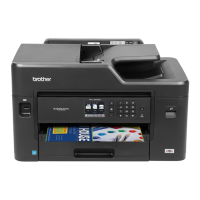
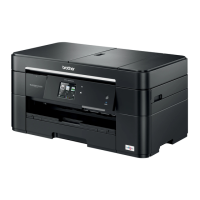


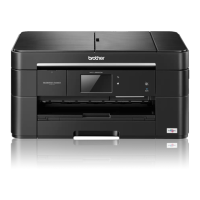



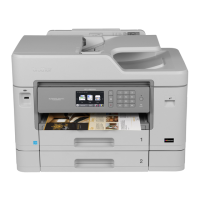

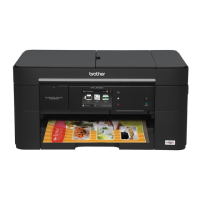
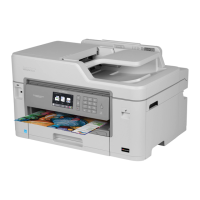
